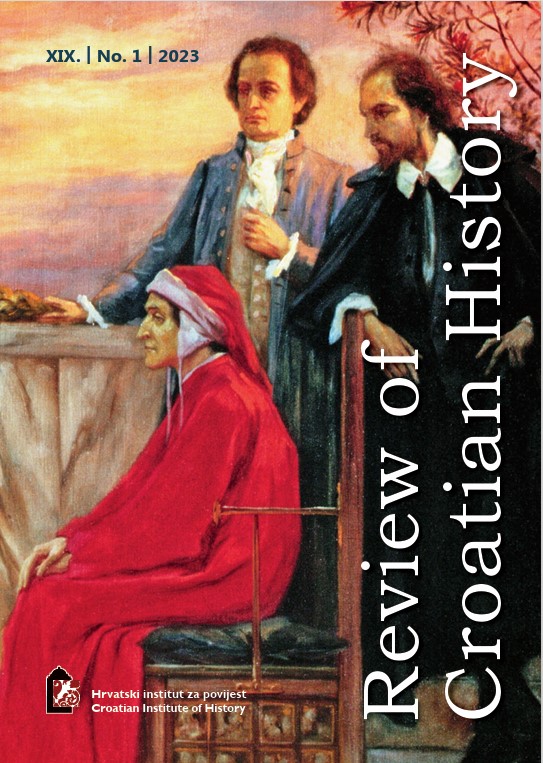Re-Evaluation of the Barbarian and the Primitive in the (Pre) Avant-Garde
DOI:
https://doi.org/10.22586/rch.v19i1.28482Keywords:
(Pre) Avant-Garde literature, Barbarian, Primitive, transfer of ideas, re-evaluation, social transformationAbstract
The heteroimage of the Southeast European semiperiphery was subjected for centuries to geopolitical stereotypes of the Slav, either as a noble savage, as in the works of Fortis and Herder in the 18th and 19th centuries, or as a political “powder keg”, as a Balkan barbarian in more recent perspective. In such a geopolitical imaginary, the Balkans were perceived (described) primarily negatively, representing not only an Oriental Other, but above all a European semi-Other, a barbaric and primitive “Other within” (Todorova). The image of the “noble savage” in the exotic vision, which sets the world in binary oppositions, is used and reinterpreted by the artists of the (pre) Avant-Garde. The movement's inherent impulse to resist and re-evaluate traditional aesthetics, history and institutions, as well as to transgressively redefine both the instances of authorship and the criteria for creating and evaluating artworks, is evident in the way barbarism and primitivism are used as counterparts to the bourgeois normative value system. Their artistic texts and performances have an inherent orientation towards the primitive and the barbaric, which are traditionally presented in opposition to Western culture and civilisation, i.e. the politics of globalisation. At the level of artistic transgression, this transposed “otherness” is treated as a dialogical opponent, an object of fascination and identification, and a site of appropriation of time. This article deals with the way the primitive and the barbaric were treated in the Yugoslav avant-garde, either in some collective undertakings (Zenitism, Surrealism) or in individual creations (Ujević, Krleža). This topic will be addressed in three steps: 1. in the context of reflections on literature as a response to geopolitical prejudices (stereotypes); more specifically, in the concepts of the centre (especially Eurocentrism), civilisation and primitivism; 2. in a consideration of the use of primitivism, barbarism and bohemianism as expressions of aesthetic and public (political) resistance to regulated social practises and value systems; 3. an interpretation of these phenomena in the context of either imaginary or actual literary and social transformations.
Downloads
Published
How to Cite
Issue
Section
License
Copyright (c) 2023 The copyright holders are the Croatian Institute of History (as the publisher) and the authors.

This work is licensed under a Creative Commons Attribution-NonCommercial 4.0 International License.
The copyright holders are the Croatian Institute of History (as the publisher) and the authors.
The Review of Croatian History is an open-access journal. Its contents are freely accessible in their entirety. Users may read, download, copy, distribute, print, search, or put links to its material, and to change, reword, and process the material or use it in other legal ways, as long as they cite the original in the appropriate manner, in accordance with the Creative Commons licence CC BY-NC.
Works published in the Review of Croatian History may be deposited in institutional or thematic repositories, as long as the appropriate links to the web pages of the Journal and Hrčak (central portal of Croatian scientific journals) are made available.
The self-archiving policy is indexed in the Sherpa/RoMEO database, where it is visible that the journal allows the depositing of unreviewed (pre-print), reviewed (post-print), or publisher’s versions of the work.


